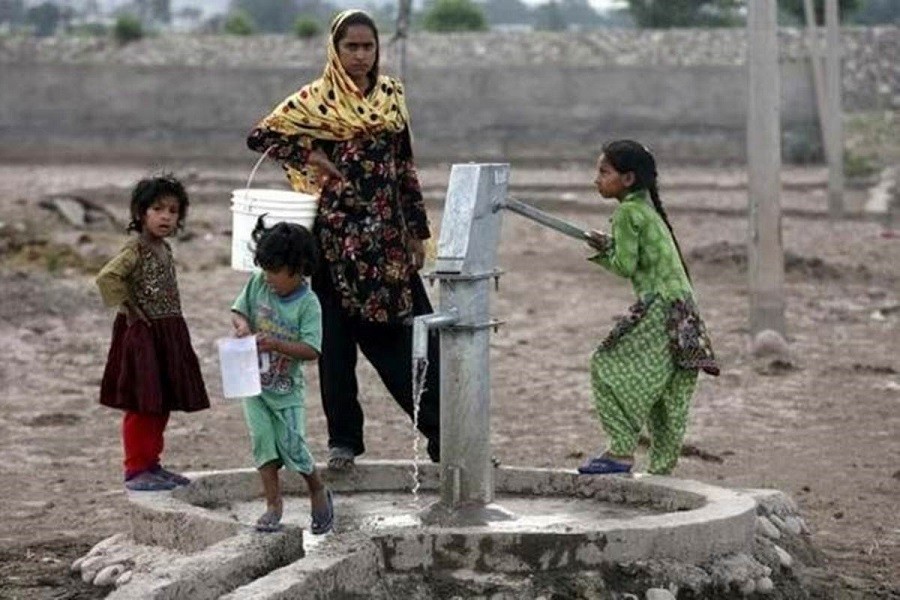
Published :
Updated :

New studies conducted to see how the extraction of groundwater to irrigate rice fields is affecting water table in the Barind region in the northwest of Bangladesh have come up with surprising results. In particular, the new studies attempt to debunk the myth that Boro cultivation in the Barind region has been depleting the groundwater reservoir of the area in question. As the new calculation shows, the actual amount of water necessary for producing one kilogram of Boro rice would be from 550 to 650 litres whereas previous estimates held that the quantity should have been between 5,000 and 6,000 litres. The studies further point out that, actually, about 40 per cent of the groundwater thus withdrawn is returned to the aquifer through seepage and percolation. Also, water from floods and rain contributes to the groundwater replenishment, experts leading the research further claimed. If that is the case, then there should be no reason for concern over the ongoing irrigation of rice fields of the Barind region using groundwater. This sounds rather reassuring not only for the rice farmers of the drier north-western Barind region but also for the country's entire peasant population.
Clearly, the findings of the said research, as claimed by its proponents, should dispel all fears about any severe crisis of irrigation water in the future. Notably, these results were found from two separate studies, which were reportedly conducted over the past five years in the Barind region by local experts in collaboration with international partners. The outcome of the studies being so heart-warming, it is hardly surprising that those present from the academia, different government bodies on agriculture including the minister at the virtual event welcomed it more or less uncritically. In that event, the new research provides the scope for a wholesale review of the current notion that, generally, the existing mode of irrigation for rice production is unsustainable. Also, what should further follow from the research is that the argument of declining water table arising from the use of groundwater to grow rice may be devoid of any sound basis. But this long-held notion has been a factor influencing policymakers in the country's agriculture sector.
While generally welcoming the research findings, a note of caution on this score would not be out of place. There is also non-agricultural withdrawal of groundwater on a massive scale for drinking and other purposes, especially, in the cities. That apart, due to water control structures built in the upstream of many rivers flowing down from India into Bangladesh, water flow has substantially reduced in them. In turn, it (reduced flow) has been negatively impacting the process of replenishing the aquifers with fresh supply of water. So, all these factors need to be considered before coming to a conclusion on the very sensitive issue of water use whether for agriculture or for other purposes.
So to ensure the country's water security, the focus should be more on an integrated plan for water use. Obviously, in such planning, the issue of conservation, especially, of surface water should take the centre stage. In this context, the outcome of the said research in the Barind region should come in handy for policymakers in adopting such an integrated strategy for sustainable use of water. To cut a long story short, it would be advisable for the government to ensure that a more balanced approach is taken regarding the use of groundwater in agriculture.


 For all latest news, follow The Financial Express Google News channel.
For all latest news, follow The Financial Express Google News channel.